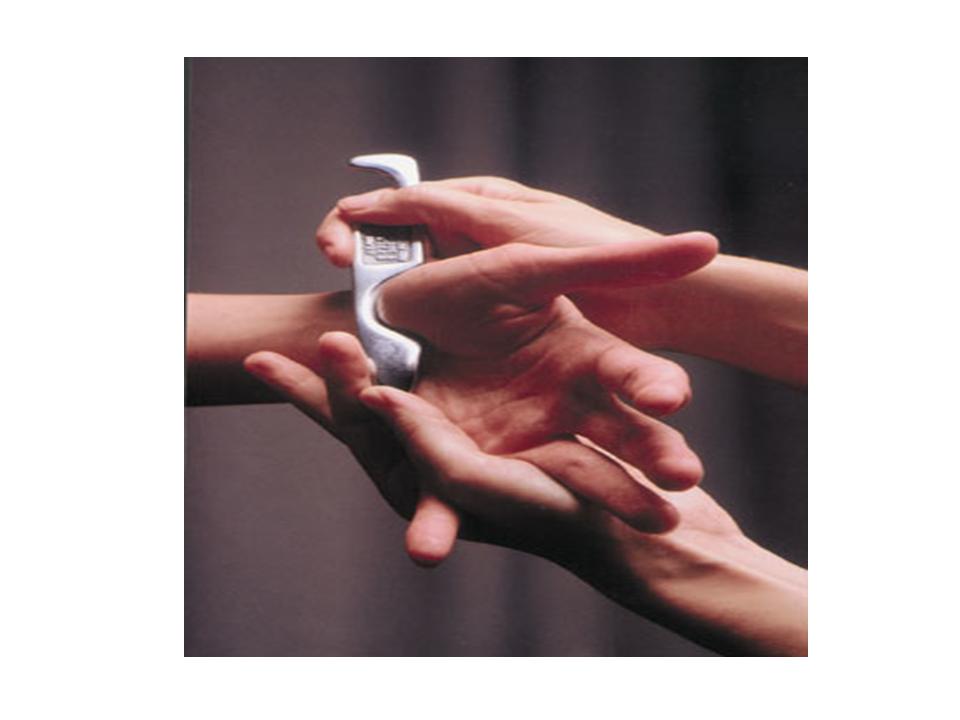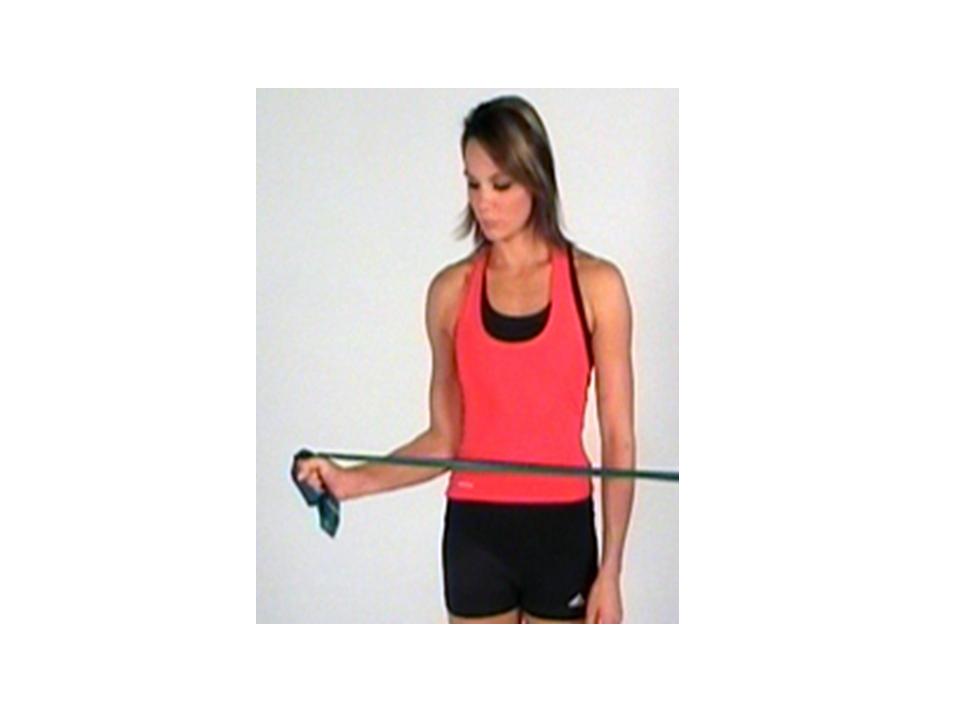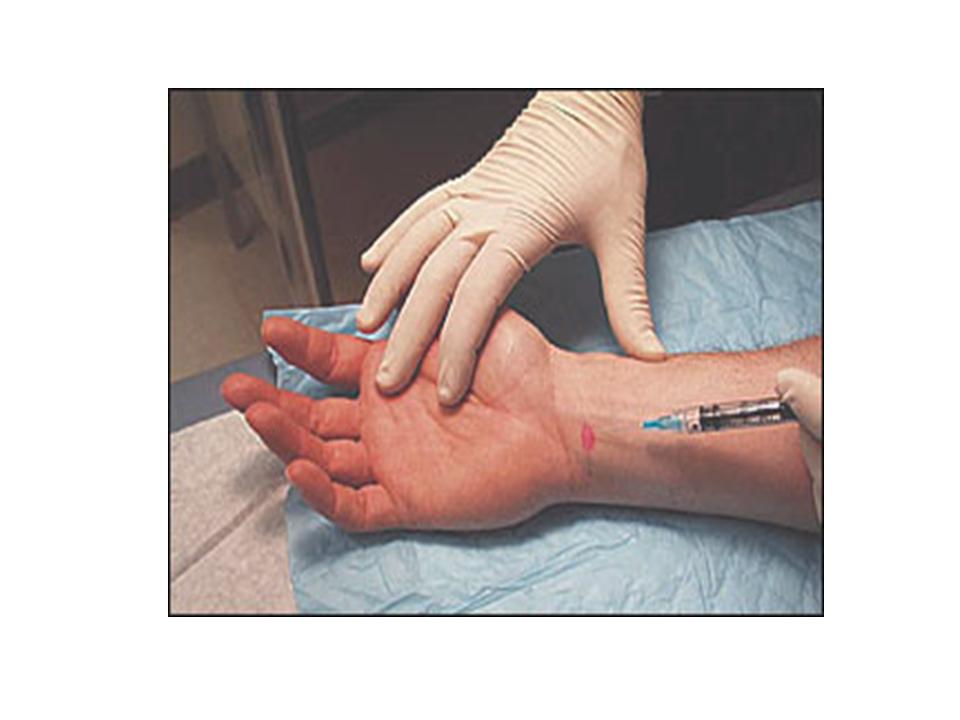News Letter, Vol. 3 (1), February, 2011, © Copyright
Jun Xu, M.D. Lic. Acup., Hong Su, C.M.D., Lic. Acup.
Robert Blizzard III, DPT
Rehabilitation Medicine and Acupuncture Center
1171 East Putnam Avenue, Building 1, 2nd Floor
Greenwich, CT 06878
Tel: (203) 637-7720
Carpal Tunnel Syndrome
www.0831120.com
Jessica is a 35 year old computer programmer, who for the last 15 years, works roughly 10 hours a day at the computer. For last 2 years, she started to feel right hand numbness and tingling sensation along her thumb, index and middle fingers. This sensation often occurs while holding a steering wheel, phone, newspaper or upon awakening. She very often “shakes out” her right hand to try to relieve symptoms, especially when the pain interferes with sleep waking her up. As the disorder progresses, the numb feeling becomes constant. She sometimes also feels right wrist pain radiating up to arm and shoulder, and also down to palm, especially at end of the day after spending a long time typing. She has difficulty holding a book or cup and very often drops her book or other objects. She tried to massage her hand and wrist, however, she felt no improvement. She then came to me for evaluation and treatment.
I performed a physical examination, finding out while I squeezed her right palm together and held for 2 mins, she started to feel numbness and tingling sensation at thumb, index and middle fingers. By comparison, her muscles of right thumb and lateral palm are slightly atrophy and the sensation is decreased by using pinpoint. Suspecting this patient had carpel tunnel syndrome, I also performed the following two tests:
1. Tinel’s sign. I used my hammer to tap lightly at the middle line of the wrist above the carpal tunnel, so the patient felt the sensation of tingling or pins and needles following to the first three fingers.
Fig 2.1
www.flickr.com
2. Phalen’s maneuver. I asked the patient to flex the wrist about 60-80 degrees, then waited for one minute, which caused her to feel numbness and tingling following along the median nerve distribution.
Fig.2.2
www.flickr.com
Jessica most likely suffered from carpal tunnel syndrome. Carpal tunnel is a tunnel located at the midline of palm adjacent to the wrist, median nerve lies inside the tunnel. The median nerve is a mixed nerve, meaning it has a sensory function and also provides nerve signals to move your muscles (motor function). The median nerve provides sensation to your thumb, index finger, middle finger and the middle-finger side of the ring finger.
Fig. 2.3
www.thepainsource.com
Pressure on the nerve can stem from anything that reduces the space for it in the carpal tunnel.
There are several causes of carpel tunnel syndrome:
1. Most are idiopathic (not knowing the cause)
2. Genetic predisposition. Many families have this tendency toward carpel tunnel syndrome. About 50% of those who develop the condition are women, where this complaint runs in the family. It may be that your carpal tunnel is more narrow than average.
3. Professionally related. Though there is some controversy over this, certain professions such as data entry technicians, secretaries, construction workers etc. have high liability toward carpel tunnel syndrome. Repetitive flexing and extending of the tendons in the hands and wrists, particularly when done forcefully and for prolonged periods without rest, can increase pressure within the carpal tunnel. Injury to your wrist can cause swelling that exerts pressure on the median nerve.
4. Diseases related conditions such as trauma, pregnancy, multiple myeloma, amyloid, rheumatoid arthritis, acromegaly, mucopolysaccharidosis or hypothyroidsm compress the median nerve, and all can cause the symptoms of carpel tunnel syndrome. If the cause of the disease is treated, then carpel tunnel syndrome will gradually disappear.
How is carpal tunnel syndrome diagnosed?
1. Most important: Your symptoms. As mentioned above, if you have numbness and tingling sensation at thumb, index, middle and half of the ring fingers, if you wake up and shake your hand try to relieve hand pain and numbness, if you very often drop off the object, such as books, cup, pen, etc., the diagnosis of carpal tunnel syndrome is suspected.
2. By physical examination: Sometimes tapping the front of the wrist can reproduce tingling of the hand, and is referred to as Tinel’s sign and Phalen’s sign of carpal tunnel syndrome. Symptoms can also at times be reproduced by the examiner by bending the wrist forward (referred to as Phalen’s maneuver).
3. Nerve Conduction Velocity test (NCV)and Electromyogram (EMG) :
The golden standard for the diagnosis of carpel tunnel syndrome is electrophysiological testing, i.e. nerve conduction and electromyography. Usually a physical examination, coupled with the patient’s complaints on her condition, are sufficient to make an accurate diagnosis. However, the final diagnosis depends on the electrophysiological testing. The test not only will tell you the diagnosis, but also the types of treatment and prognosis, if your condition needs physical therapy, acupuncture, brace, steroid injection, or surgery, etc. if your condition is reversible or non-reversible, etc.
There are two parts of electrophysiological tests, i.e. Nerve Conduction Velocity Study (NCV) and Electromyography (EMG). It usually is performed by Physiatrists, i.e. Physical Medicine and Rehabilitation Doctor, or Neurologists with special training on the test.
NCV involves with mild to moderate electrical current stimulation at patient’s median nerves at the elbows and wrists of both side, then a computer will record the responses of the nerves and compare the velocity, amplitude and latency. By comparing with normal standard, also the patient’s left side median nerve with right side, your physician will identify injury at the median nerves if you have any.
EMG test applies a very fine needle into your muscles at the palm, arm and neck. The needle contains a microscopic electrode, which picks up both normal and abnormal electrical signals given off by a muscle. If there is nerve damage, the muscles supplied by the nerve will send out abnormal signals. Because median nerve originates from cervical spine, i.e. on the neck and go through entire arm and lateral palm, therefore, some muscles will be examed with the needles.
The test usually will take about 30 min to one hour depending on how severe your condition and how extensive of a study your physician would choice. You may feel mild discomfort with the test, however, 99.9% of my patients easily take the test from my hand.
4. Blood tests may be performed to identify medical conditions associated with carpal tunnel syndrome. These tests include thyroid hormone levels, complete blood counts, and blood sugar and protein analysis. X-ray tests of the wrist and hand might also be helpful to identify abnormalities of the bones and joints of the wrist.
How is carpal tunnel syndrome treated?
Carpal tunnel syndrome can be classified as three types: mild, moderate and severe, depends on their symptoms and electrophysiological testing.
For mild and moderate cases, the following treatments are recommended:
1. Immobilizing braces. A wrist splint can help limit numbness by preventing wrist flexion, which might compress the median nerve. The patient should wear a night splint, usually called a cock-up splint and the wrist should be hyperextended above 30 degrees. Worn overnight for 7-8 hours, the nerves are rested and, in the morning, the patient feels much relieved and the symptoms will gradually improve.
Fig. 2.4
www.healthwise-everythinghealth.blogspot.com
2. Physical Therapy
It is very important to improve mobility in the wrist flexors by means of stretching to rid of any restrictions and inflammation being placed through the carpal tunnel where the tendons of the wrist flexors and median nerve pass through. To perform this stretch pull the fingers and thumb back to you with your palm facing away from the body. This stretch for the wrist flexors can be progressed to placing the hand on a wall or a table. A strong but comfortable stretch should be performed 2-3 times a day and held for 30-60 seconds.
Fig. 2.5
http://www.revolutionhealth.com/articles/stretches-to-ease-wrist-and-arm-fatigue/zm2290
In addition to stretching the wrist flexors, great research on Nerve Gliding has shown quicker decreases in levels of pain, increased grip strength, improved function, while decreasing need for surgery. Patients performing Nerve Gliding Exercises underwent surgery over 30% less then those not performing the technique (Rozmaryn LM, Dovelle S. Nerve and tendon gliding exercises and the conservative management of carpal tunnel syndrome. J Hand Ther. 1998 Jul-Sep;11(3):171-9).
Fig. 2.6
http://daiseypt.com/articles/cts_conservative.htm
Modalities that have evidence behind them to effectively treat carpal tunnel are Ultrasound, Iontophoresis and Low Level Laser Therapy. The American Academy of Orthopedic Surgeons recommends Ultrasound as a treatment option to assist with short and medium term benefits of carpal tunnel. Iontophoresis with Hydrocortisone was very effective in mild and moderate stages of carpal tunnel. Low Level Laser Therapy study results include decreased pain, numbness and tingling and improved function, grip strength, EMG results and patient satisfaction.
Fig. 2.7
http://ericksonchiropractic.com
Fig. 2.8
http://www.riversidechirorehab.com
Carpal Mobilizations have been shown to improve symptoms related to carpal tunnel. A qualified physical therapist can perform such mobilizations to improve joint mobility and remove compressive joint forces off the median nerve at the thumb, wrist and elbow.
Fig. 2.9
http://www.rumsua.org/Upcoming_Book_.php
Other manual techniques with great research behind them in their effectiveness to treat carpal tunnel are categorized as bodywork or soft-tissue treatments. Active Release Technique (ART) and Graston Technique are two such techniques fitting into this category. Both ART and Graston showed improvements in mobility, strength and nerve conduction latencies at the wrist by working to remove restrictions and adhesions in the muscles and tendons of the wrist flexors. (Burke, Buchberger, et al. A Pilot Study Comparing Two Manual Therapy Interventions for Carpal Tunnel Syndrome. 2006.)
Fig. 2.10
http://www.sportfitrehab.com/ActiveReleaseTechnique/tabid/1356/Default.aspx
Fig. 2.11
http://www.therapytimes.com/content=0802J84C48768694404040441
“Eighty-one percent of CTS patients in a private study attained
80 to 100% of decreased pain and increased function goals
in 10 treatments with the Graston Technique®.”
AOTA Annual Conference and Exposition [carpal tunnel syndrome poster presentation]. 2000 Apr. http://www.grastontechnique.com/Findings.html
Strength of the forearm muscles is important to assess. With carpal tunnel there is an imbalance with the wrist flexors being predominantly stronger then the wrist extensors. The wrist extensors must be strengthened to maintain balance to the forearm and wrist. This will be accomplished by performing 2-3 sets of 10 repetitions with increasing levels of resistance bands or dumbbells.
Fig. 2.12
http://www.physioadvisor.com.au/8122850/wrist-strengthening-exercises-wrist-rehabilitati.htm
There is also great research showing the positive effect of Eccentric Strengthening Exercise to the Wrist Flexors to improve both Strength and Length of the muscle. Eccentric Muscle Contraction is when the muscle is being activated while lengthening. This would be performed by slowly lowering the wrist to the starting position over a period of 5 seconds for 2 sets of 10 repetitions.
Fig. 2.13
http://www.emedx.com/apex/apex_exercises/apex_wrist_flexor_strengthening.htm
It is also important to assess posture overall. Many symptoms of carpal tunnel syndrome can be the result of improper posture at the shoulders and neck. A few simple exercises to help correct any imbalances at the shoulders and neck should be part of the carpal tunnel program such as Shoulder External Rotation and Upper Traps Stretch.
Fig. 2.14
http://www.sportsinjuryclinic.net/
Fig. 2.15
http://www.wholistichealthworks.com/dealing_with_a_pain_in_the_neck.htm
Even with all the treatment approaches listed previously, if the underlying problem, such as inappropriate stresses placed to the body while at work, are not corrected the problem will resurface. Physical Therapist also play an important part in educating the patient on proper ergonomics and even visit work sites to properly set up office spaces to ensure proper arm and wrist position.
Fig. 2.16
http://blog.scad.edu/bcasam20/2011/02/01/
Fig. 2.17
http://chirohealthwellness.com/custom_content/c_97882_sitting_survival_workshop_for_your_emplo.html
3. Western medicine also uses nonsteroid anti-inflammatory drugs such as Aleve and naproxen, or even some steroid drugs taken orally.
4. Localized steroid injections. Steroid injections can be used for mild and moderate forms of this syndrome, and are very effective for temporary relief. However, these injections are not recommended for severe carpel tunnel syndrome.
Fig. 2.18
www.aafp.org
5. Acupuncture. Acupuncture is also very effective for mild to moderate forms of this syndrome. The points used are PC 7 Da Ling and PC 6 Nei Guang Usually after inserting the needles at these two points, it is effective to introduce electrical stimulation whose direction should be toward the fingertip. The patient should feel the needle sensation radiating to the tips of the fingers and sometimes feels swelling and sore and experiences electrical shock to the fingertip. This treatment is most effective three times a week for a month, while during the nighttime she should wear a cock-up splint for sleep. Many patients get excellent results from the combination of these two treatments.
Table 2-1
| Points | Meridan/Number | Location | Function/Indication | |
| 1 | Da Ling | Pericardium 7 | In the middle of the transverse crease of the wrist, between the tendons of palmaris longus and flexor carpi radialis | Cardiac pain, palpitation, stomach ache, vomiting, mental disorders, epilepsy, stuffy chest pain in the hypochondriac region, convulsion, insomnia, irritability, foul breath, pain of the elbow, arm and hand. |
| 2 | Nei Guang | Pericardium 6 | 2 inch above the transverse crease of the wrist, between the tendons of palmaris longus and flexor radialis | Cardiac pain, palpitation, stuffy chest, pain in the hypochondriac region, stomach ache, nausea, vomting, hiccup, mental disorders, epilepsy, insomnia, febrile diseases, irritability, malaria, contracture and pain of the elbow, arm and hand. |
| 3 | Qu Ze | Pericardium 3 | On the transverse cubital crease, at the ulnar side of the tendon of biceps brachii | Cardiac pain, palpitation, febrile diseases, irritability, stomach ache, vomiting, pain in the elbow, arm and hand, tremor of the hand and arm. |
Fig. 2.19
For severe carpel tunnel syndrome, surgery is the best option. There are two major type surgeries, i.e. open hand surgery and endoscopic surgery.
In carpal tunnel release, your surgeon cuts the tissue that holds joints together (carpal ligament) to relieve the pressure on your median nerve. You’ll have local or regional anesthesia, and you’ll usually go home soon after your surgery. Surgery usually results in significant improvement in your symptoms, but you still may experience some residual numbness, pain or weakness.
In endoscopic surgery, your surgeon performs carpal tunnel release through one or two small incisions in your hand or wrist using a device with a tiny camera attached to it (endoscope) to see inside the carpal tunnel.
Jessica underwent my treatment for a total of 12 visits and used a cock-up splint at night and rested her hand for one month without typing. Gradually her symptoms lessened and she felt much less numbness and tingling sensation; her hands recovered their strength as well.
Tips for both acupuncturists and patients:
1. A clear diagnosis is necessary. Some patients feel numbness and tingling in their fingers and hands without having carpel tunnel syndrome. These sensations might be due to rheumatoid arthritis, osteoarthritis and other causes and if the diagnosis is not correct, the acupuncture and a cock-up splint cannot help.
2. The insertion of the acupuncture needles for the two points PC7 and PC 6 should not be too deep, about ½ inch, however, the electrical stimulation should be as strong as possible and as tolerable so it will bring enough energy to flow through the carpal tunnel and decrease the swelling of the hand.
3. I usually encourage the patient to wear the cock-up splint not only at night, but as much as is practicable during the day, while driving, doing housework, etc. which will greatly improve the patient’s rest on the median nerve and the carpal tunnel.




















